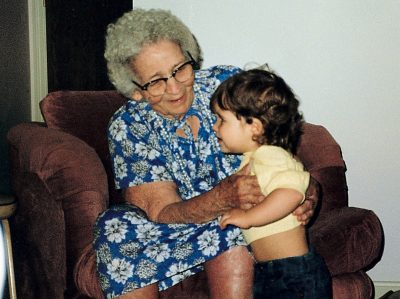Some grooms to be are really willing to go the extra mile to surprise their potential brides, so much so that all the normal down-on-one-knee-with-a-ring stuff looks like child's play. We caught up with some particularly adventurous types who were willing to share their over the top, totally outrageous marriage proposals.
Some men make it known that marriage will be a real cliff-hanger
When Jason Daniels wanted to propose to his rock-climber girlfriend, Melissa, he knew he would take her to the mountains for a good climb to do it, because nothing helps make a list of outrageous marriage proposals quite like a little danger. "She's always scaling a mountain because that's where she feels her calmest and most in her element, and that's exactly where and when I needed to catch her for the proposal. I hid the ring box inside the water bottle I had attached to my harness and started heading down a really steep cliff with her. She was a few jumps ahead of me, and when I caught up—about 250 yards above the regular ground level—I popped the question. We were in a dangerous spot though so we couldn't hug till we were all the way down. I got a quick 'YES!' and a peck on the cheek, and slid down a mountain as fast as I could. I couldn't wait to call our families." Find out the 13 things you need to do after getting engaged.
Go big on network TV or go home
When Marlon LeWinter proposed to Ashley Yanover, he knew a standard dimly-lit dining room at a popular restaurant just wouldn't be memorable enough. He managed to appear in the Today Show's outdoor audience and stage being picked as the audience members of the day to get inside the studio—Ashley thought it was fun but never caught on that something bigger was about to happen. As Ashley gave the hosts a helping hand reading from the teleprompter, Marlon went into full proposal mode, and she obviously said yes. You can see the whole adorable engagement here. Find out the truth behind these common marriage myths.
If you bring her to a serene lake, make sure you bring a hairdryer

When Marcus Rein proposed to Jessie Janis, he thought he planned the most perfect, dimly-lit sunset dinner on the dock of a local lake in their Michigan hometown. He set up a cafe-style table, two fabric-covered chairs, brought a picnic basket, and even hired a guitar player to strum softly—what he didn't plan was the weak wooden boards at the end of the dock where he would end up kneeling to propose. By the time he was mid-question one of the wooden boards came loose, shifted beneath Jessie, and she was tossed into the lake. "Luckily it was July, really warm, and I was obsessed with Marcus so I would've said yes no matter what, but falling in definitely made it one of the most outrageous proposals we've ever even heard of," Jessie shared.
Don't bring a ring to the top of a lookout point over the ocean
"I thought I was being brilliant and creative," shares Kirk Gunner. "I brought my girlfriend to her hometown in Hawaii to propose at the top of a lookout point over the Pacific. Everything was perfect including the pink-ish sky, my best friend as the photographer, and the weather, but when I proposed I brought a ring that was a little too big, and it slipped off her finger when we were hugging after her 'yes' and through the cracks of the lookout point's viewing deck. Somewhere in the Pacific off Kona there's a $5,000 ring if anyone is looking for buried treasure."










